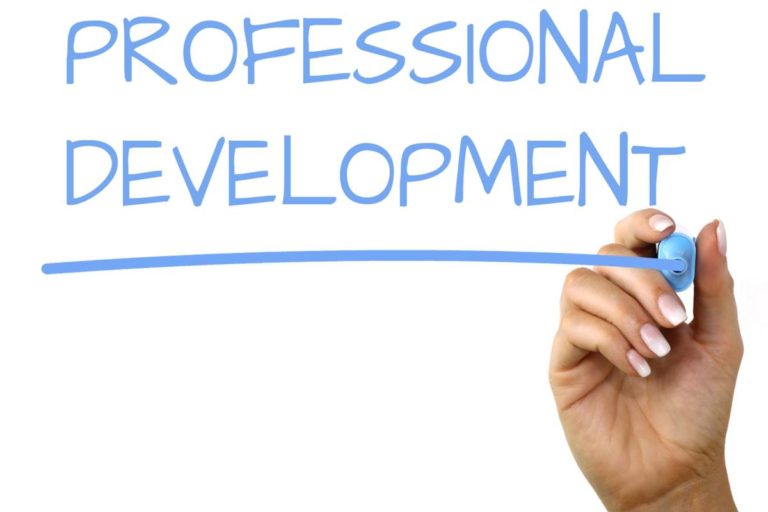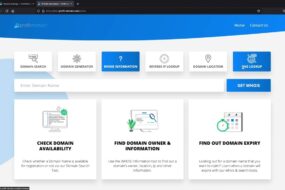
Streamlining the Software Development Process with Development Staging Environments
What are Development Staging Environments?
Development staging environments, often referred to as dev staging or simply staging environments, are isolated environments where software developers can test and refine their applications before deploying them to the live production environment. These environments closely mimic the production environment and provide developers with a controlled space to assess the functionality, performance, and compatibility of their software.
The Significance of Development Staging Environments
- Enhanced Software Quality Assurance: Development staging environments serve as a crucial component of the software development lifecycle, allowing developers to identify and rectify issues before releasing the software to end-users. By conducting comprehensive testing and debugging in a controlled environment, developers can significantly reduce the occurrence of bugs and errors in the live production environment.
- Risk Mitigation: Staging environments act as a safety net by mitigating the risks associated with deploying untested or unstable software. By separating the development and production environments, businesses can minimize the potential impact of software failures, ensuring a smooth and seamless experience for end-users.
- Collaborative Development: Staging environments facilitate collaboration among developers, testers, and other stakeholders involved in the software development process. With a dedicated environment for testing and experimentation, teams can work together to fine-tune the software, streamline workflows, and ensure optimal performance.
Best Practices for Effective Development Staging Environments
Creating an efficient and reliable development staging environment requires careful planning and adherence to industry best practices. Let’s explore some key recommendations that can help you optimize your development process:
1. Isolate the Staging Environment
To ensure an accurate representation of the live production environment, it’s essential to isolate the staging environment from other environments, such as development and testing. This isolation prevents interference from ongoing development activities and minimizes the risk of conflicts that could impact the reliability of the staging environment.
2. Emulate Production Environment Configuration
To achieve maximum effectiveness, the staging environment should mirror the configuration of the live production environment as closely as possible. This includes replicating the server infrastructure, network settings, software versions, and database configurations. By maintaining consistency between the staging and production environments, you can accurately assess the software’s behavior and identify any issues that may arise in the live environment.
3. Automate Deployment Processes
Automation plays a vital role in ensuring a streamlined and efficient software development pipeline. By automating the deployment processes in your staging environment, you can minimize human errors, reduce deployment time, and improve overall efficiency. Tools such as continuous integration and continuous deployment (CI/CD) pipelines can help automate build, test, and deployment tasks, enabling rapid and reliable software releases.
4. Implement Version Control
Version control systems, such as Git, provide a centralized repository for managing code changes and collaboration among developers. By utilizing version control in your staging environment, you can track changes, rollback to previous versions if necessary, and maintain a clear record of modifications made during the development process. This not only ensures code integrity but also fosters collaboration and accountability among team members.
5. Monitor and Analyze Performance
To optimize your software’s performance, it’s crucial to monitor and analyze its behavior in the staging environment. Implementing robust monitoring tools and performance testing frameworks allows you to identify potential bottlenecks, resource utilization issues, and performance degradation. By proactively addressing these concerns in the staging environment, you can fine-tune your software for optimal performance in the live production environment.
Frequently Asked Questions (FAQs)
1. What is the primary purpose of a staging environment?
The primary purpose of a staging environment is to provide developers with a controlled and isolated space to test and refine software applications before deploying them to the live production environment. This allows developers to identify and rectify any issues or bugs and ensure a smooth user experience.
2. How does a staging environment differ from a development environment?
While both staging and development environments are crucial for software development, they serve different purposes. A development environment is where the actual coding and initial testing take place. On the other hand, a staging environment closely mirrors the production environment and is used for comprehensive testing, bug fixing, and final refinements before releasing the software to end-users.
3. Can a staging environment help minimize downtime in the live production environment?
Yes, a staging environment can significantly minimize downtime in the live production environment. By thoroughly testing the software in the staging environment, developers can identify and resolve potential issues, reducing the likelihood of failures or disruptions in the production environment. This ensures a seamless experience for end-users and helps maintain business continuity.
4. What are some common challenges faced in managing a staging environment?
Managing a staging environment can present certain challenges, including ensuring environment consistency, data synchronization, and maintaining an up-to-date replica of the production environment. Additionally, managing the resources and infrastructure required for an efficient staging environment can be complex. However, with proper planning, automation, and adherence to best practices, these challenges can be overcome.
5. How can I optimize the utilization of my staging environment?
To optimize the utilization of your staging environment, consider implementing parallel testing, where multiple teams or developers can work simultaneously on different features or projects. Additionally, by leveraging infrastructure-as-code principles, you can easily provision and configure resources in the staging environment, reducing setup time and maximizing efficiency.
Top Selling Category: Cutting-Edge Development Staging Environment Tools
When it comes to development staging environments, several exceptional tools have gained popularity in the software development community. These tools provide developers with advanced features, seamless integration capabilities, and intuitive interfaces. Here are some top-selling tools in this category:
- DevStagePro: DevStagePro is a powerful development staging environment tool that offers comprehensive testing capabilities, environment isolation, and seamless deployment processes. With its user-friendly interface and robust automation features, DevStagePro simplifies the software development process, empowering teams to deliver high-quality applications efficiently.
- StageMaster: StageMaster is an innovative staging environment management platform that enables developers to create, manage, and deploy staging environments effortlessly. Its intuitive dashboard, collaboration features, and version control integration make it an ideal choice for teams seeking to optimize their software development workflow.
- EnviroTest: EnviroTest is a cutting-edge testing and quality assurance tool specifically designed for staging environments. It provides developers with in-depth testing capabilities, performance monitoring, and real-time analytics, allowing them to identify and rectify any issues before software release. With its comprehensive reporting and visualization features, EnviroTest enables teams to make data-driven decisions and ensure top-notch software quality.
Top Selling Products: Boost Your Software Development Process
In addition to development staging environment tools, there are various products available that can further enhance your software development process. These products offer a wide range of features, including code editors, collaboration platforms, and project management tools. Here are some top-selling products that can significantly boost your development workflow:
- CodeWizard: CodeWizard is a feature-rich code editor that provides developers with a powerful and customizable environment for writing, debugging, and testing code. With its intelligent code completion, syntax highlighting, and seamless integration with version control systems, CodeWizard streamlines the coding process and enhances developer productivity.
- CollabHub: CollabHub is a comprehensive collaboration platform that facilitates effective communication and collaboration among team members. With features such as instant messaging, file sharing, and task management, CollabHub fosters teamwork, improves coordination, and ensures efficient project delivery.
- ProjectTracker: ProjectTracker is a robust project management tool designed to streamline the software development lifecycle. It offers features such as task tracking, milestone management, and resource allocation, allowing teams to effectively plan, execute, and monitor their projects. With its intuitive interface and real-time project insights, ProjectTracker enables seamless project management and successful software delivery.
Top Selling Brands: Trusted Names in Development Staging Environments
In the realm of development staging environments, certain brands have established themselves as industry leaders, known for their commitment to excellence and innovative solutions. These brands have garnered a strong reputation and are trusted by developers worldwide. Here are some top-selling brands in the development staging environment domain:
- DevOptics: DevOptics is a renowned brand known for its comprehensive suite of software development and deployment tools. With a focus on streamlining the development process, DevOptics offers a range of products that cater to the specific needs of developers, ensuring efficient testing, debugging, and deployment in staging environments.
- StagingGenius: StagingGenius is a trusted brand that specializes in providing cutting-edge solutions for development staging environments. With its state-of-the-art tools and extensive feature set, StagingGenius empowers developers to create reliable staging environments, conduct thorough testing, and deliver high-quality software.
- EnviroMasters: EnviroMasters has established itself as a leading brand in the development staging environment market. Known for its emphasis on environment consistency, scalability, and performance optimization, EnviroMasters offers a range of solutions that enable developers to create and manage staging environments with ease.
Conclusion
In the ever-evolving landscape of software development, the role of development staging environments cannot be overstated. These environments serve as invaluable tools, enabling developers to test, refine, and ensure the quality of their software applications before releasing them to end-users. By implementing best practices, leveraging top-selling tools and products, and relying on trusted brands, businesses can optimize their development process and gain a competitive edge in the industry. Embrace the power of development staging environments and unlock the potential for efficient, high-quality software development.






